Add or subtract numerators only while the denominator will remain the same. This is the general rule in adding and subtracting fractions. This is applicable only if the fractions have the same denominator. Those fractions which have the same denominators are called like fraction. Those fractions that have different denominators, there are four methods to make their denominators the same before applying the general rule. These methods are listed and explain below.
LCD Method:
This is the most popular method of adding and subtracting unlike fractions. This is the chosen method used in teaching elementary and high school students. The steps in applying method are listed below.
List all the multiples of each denominator.
Find the smallest or the least multiple that is common to all denominators. This is the least common multiple or LCM.
Use the LCM to make like fractions by dividing the LCM to the denominator and multiply the answer by the numerator. The result will the new numerator and the denominator will be the LCM. The LCM is now your LCD.
Example:
Cross – Multiply or Butterfly Method:
This method is very easy method because you just have to cross-multiply. You will multiply the first numerator to the second denominator and second numerator to the first denominator. The results will be the new numerators. For the denominator, you will multiply the first denominator to the second denominator. The result will be their new denominator.
Example:
The Grid Method:
The Grid method is applicable only for two fractions at a time. This method uses rows and columns to represent the denominators. The product of the rows and columns will represent the new denominator the sum of the numerators will be the new numerator. This method is suitable for people that are good visual learners. Learning fraction through visualization is one of the most effective methods suitable for young learners. So Grid method should be taught in elementary or even in kindergarten education.
Example fraction equation is 1/4 + 2/3.
Follow the steps below to perform the Grid method.
The denominators are 4 and 3. You need to make 4 columns and 3 rows to represent the denominators. The result would make 12 boxes. This is the same as multiplying the two denominators.
-
To represent the 1/4 fraction, fill the first column with 0s. To represent the 2/3 fraction, fill the first and second rows with Xs.
-
After filling with Xs and 0s, the result will be seen below.
-
For boxes with both X and O, move the X to an empty boxes. Now the boxes that are filled with Xs or Os represent the sum and will become the new numerator. The total boxes will represent the new denominator. So by counting the boxes below, the answer of ¼ + 2/3 will be 11/12.
Ky Davis Method:
This method is introduced by Ky Davis from Muskingum University. This method may not be used in some schools but at least it can represent a new way of adding or subtracting fractions. This method utilizes a tally marks. Both fractions will be represented by tally marks until both denominators will be equal. Follow the steps below:
Those are the methods to add or subtract fractions but you can also use fraction calc to solve fraction problems without any hassle of actual computation.
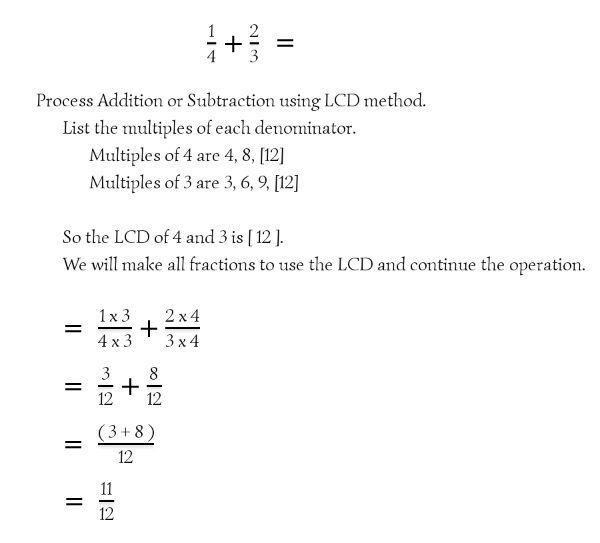
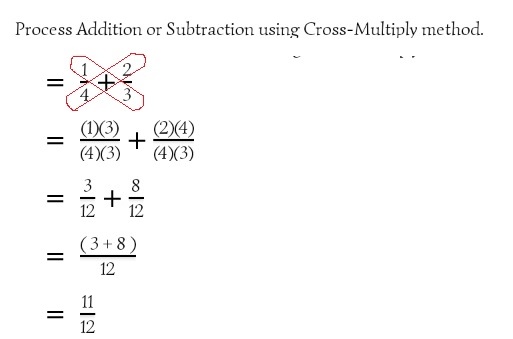

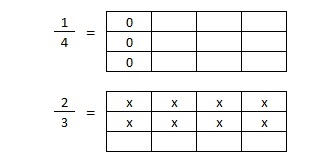

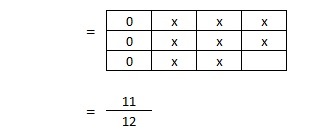
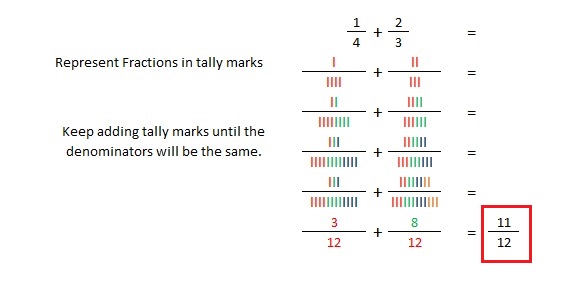
Recent Comments